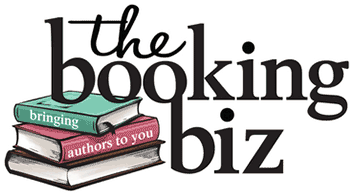Our client Molly B. Burnham is no stranger to teaching and the theater. Molly studied acting in London, England, holds a Masters in Elementary Education and taught kindegarten, third grade and at a school for emotionally challenged middle- and high-school age students.
That’s why we’re excited to have this guest post about improv and The Power of Yes from Molly and author Lisa Papademetriou. Read on…

A couple of years ago, we got together with Improv teacher and child therapist Heidi Haas to explore the idea of using Improv games to spark writing ideas, make writing more fun, and connect students to the craft of writing in a deeper way. We developed a curriculum and brought it into third, fifth, and tenth grade classrooms. The games focused on helping writers develop characters, settings, and conflict, and were as much for the students as for the teachers. We wanted to offer exercises and games that could be replicated. These visits were hilarious, often touching, and absolutely electric with ideas.
Yes, And
An effective classroom is like a laboratory; it’s a safe place to explore ideas, collaborate, make mistakes and revise thinking. But this environment can often fail to translate when students face a blank page. Improv can be a great way to reinforce the message that writing can be fun, because in Improv, there are no wrong answers. The first rule of Improv is “Yes, and,” which means that participants must work with whatever the first “offer” from the scene partner or audience is. For example, if my scene partner says, “Oh, it’s so rainy,” my response should never be, “No, it isn’t. It’s sunny,” or “We’re just in a classroom.” An Improv-based response would be something like, “Yes, and it’s literally raining cats and dogs! Look, I just caught a kitten!”
We believe firmly that to build a story we often need to give our internal editor the day off and say yes to whatever ideas come along.

Lower the Stakes
The most important thing to remember about Improv games is that they are games. Although they don’t have to be funny, they should be fun! We purposely began each session with a “warm-up” game or two, to make sure that the kids could have immediate success while being silly in front of each other. These were simple, such as standing in a circle and taking turns saying letters of the alphabet in dramatic voices. We emphasized that people often have the same or similar ideas, so if someone does the voice and letter you were thinking of, go ahead and do it again!
Success is as simple as taking part.
Scaffold the Work
Soon, we moved from playing games to using those games to spark writing. To do this, we began with drawing and timed list-making. These sketches and lists were done very quickly—for example, we gave the students one minute to name as many things in a setting that they could think of. No one expects to come up with something brilliant in one minute, and therefore the students weren’t intimidated. Another example of how we scaffolded the work to support the students was after the students had created short pieces with characters, settings, and conflicts, we had them come up with “movie trailers” for their stories. The movie trailer acted as a creative outline for their longer story.
Each trailer followed the format that began, “In a world,” which prompted the setting. Later sections prompted the main character and central conflict. They had a blast reading (and performing!) their trailers for their classmates.
Giving the kids a basic script to follow allowed them to really engage the ideas.
We continue to use these techniques in classrooms and workshops, and have shared this at NCTE. Lisa has just been named Artist-in-Residence for the Drama Studio, and next semester she will be helping young writers develop ideas for the stage using many of the games and techniques that she, Molly and Heidi developed. During November, Molly will be found visiting schools in Houston, Texas and talking about the Power of Wondering. She regularly teaches writing classes to adults and children and always draws on the creative force of improv to help her own writing.
Here are some simple sample games that are great in a classroom:
Warm Up
These exercises help children focus, build trust, and prepare them for other games.
Shake-down (All Grades)
Start in a circle. Shake the right arm counting from 1 to 8. Shake the left arm counting from 1 to 8. Shake the right leg counting from 1 to 8. Shake the left leg counting from 1 to 8. Shake the whole body counting from 1 to 8. Repeat sequence, counting from 1 to 4, 1 to 2, then 1, getting faster with each round. This always ends in giggles!
YES (All Grades)
Each child suggests an activity with great enthusiasm. (For example, “Let’s all brush our teeth!”) Then everyone pretends to do the activity. Everyone in the circle gets a turn to make a suggestion.
Character Games
These games focus on building characters, exploring characters, getting to know characters, and different options for character.
AEIOU (All grades)
The leader/teacher of the group starts this off by saying a letter in a certain and definite emotion and everyone repeats it. Such as “A” in an angry voice. Then go around the circle and have each child pick any letter and any emotion to act out. The whole group repeats after each child.
Pass a Character (Grades 3-12)
In the circle, each child acts out any character of their choice, such as a vain person, British/proper, cowboy, etc. (Specific characters from movies or television are discouraged.) After each child acts out his/her character, everyone repeats it. In the older classes, you can try passing it, so it goes around the circle and the students are focusing on what they have received from the first person, like in the game telephone.
Click for more information about Molly B. Burnham and what she offers with author visits.
